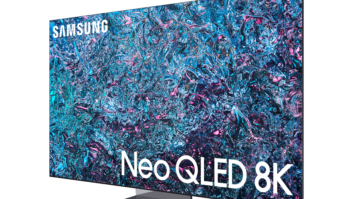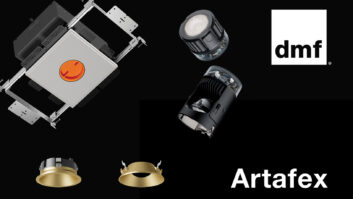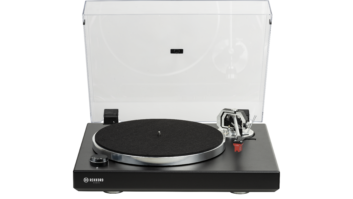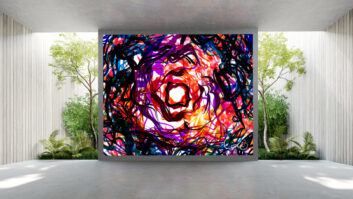On December 28, 1895, in a basement caf tucked beneath Paris Boulevard des Capucines, Auguste and Louis Lumire, two inventive and ebullient brothers, made history. But first, they caused a stampede.
Using a Cinematographa clunky camera and projector combothe Lumires showed 10 short films to a spellbound audience, and by doing so, held the worlds first public movie screening. One film in particular, a scene of a train pulling into a station, confounded and terrified the audience instantly; people screamed and ran upstairs while others ducked for cover. Or so the story goes.
Its easy to dismiss the idea that a silent, black and white train sequence was avant-garde let alone horrifying, but context is key and at the time there was nothing quite like it. Those few seconds belied viewers in an unprecedented way.
In the century since the famous screening (and screaming), the twin arts of making and watching movies have evolved as technology has maturedfrom the Zoetrope to Kinetoscope, from silent films to THX and 5.1-channel surround sound, from the Golden Age of Hollywood to computer-generated epics. Furthermore, many cinephiles contend that the latest movie magic is happening not in public arenas but right inside peoples homes with dazzling, high-definition audio and video played back through dedicated home theaters, and living rooms transformed into high-tech playgrounds outfitted with plasma screens, digital processors, and speakers flush-mounted into walls.
So whats the next stage of home theater, or should we expect more of the same? A Canadian company thinks it knows the answer, and is confident that youll feel the same way.
Montreal-based D-BOX (www.d-box.com) believes that its productsa family of motion simulation devices built right inside plush reclinersfulfill the promise of a full-immersion audio/visual experience. Blending passion for film, entrepreneurial acumen, and engineering expertise, D-BOX is inviting audiences directly into the action and transforming movie watching from a passive hobby into a first-person, interactive experience.
Technology Designed to Rock You
If seeing is believing, then hearing is feeling; who can deny the emotional impact of music and sound? D-BOX takes that premise one step further. Its engineers think that motion is the next phase of home theater because of some basic tenets of perception. Recall the last time you heard deep, rich bass in the 20Hz range. Its a physical sensationsound that you literally feel inside of you.
But bass, though intense, is not enough, according to D-BOXs strategic management advisor, Michel Jacques. Bass is good, but we wantand we needmore involvement, Jacques said.
Jacques idea isnt radical. Physical sensations tap all of our senses, not just haptic (physical) or optic (visual) alone. By teasing the visual, aural, and physical senses silmultaneously during a film, Jacques and the D-BOX team believe that the audience will achieve a dynamic and immersive experience. We want people to think of home theater as audio, video, and motion simulation…thats the most accurate recreation of the experience, Jacques added.
Jacques is no stranger to the movie industry. A former owner of numerous Montreal cinemas, he became familiar with the machinations of the film industry and learned that big studios were slow to act on new technology. His love of home entertainment, which has only become stronger through the years, coupled with an interest in a new business venture, turned his attention to D-BOX. The company, which had been manufacturing loudspeakers in Quebec since 1992, developed a prototype of its flagship Odyssee motion simulator in 1997, and its more moderately priced, two-axis Quest chair in 2004.
Shake, Rattle, and Roll
D-BOXs motion simulation seating syncs precisely with the sound and action of the film by using motor-driven actuators in the left and right rear, and one fixed pivot point in the front center. The direct-drive actuators lift and move the manual or electric armchairs which are then controlled by a proprietary Kinetron controller or a homeowners existing PC equipped with motion controller interface, via USB. The chair comes alive by playing a DVD with a coded film from D-BOXs ever-growing library. There are currently are more than 500 encoded films available, and each month, 10 to 12 new titles become downloadable via Internet subscription.
Users should choose DVDs featuring 5.1 channel sound configurations. If the movie you want is not offered with a 5.1 soundtrack or if the film isnt available in D-BOXs library, the controller will still provide a live interpretation via the movies regular soundtrack.
D-BOXs team of trained motionologists artfully write the digital motion code to complement the films movement, frame by frame; it is a meticulous project, a bit like creating a film soundtrack. Choosing what movement should be coded requires discretion. Its not the quantity of the motion, it is the effectiveness, Jacques noted. Often its the nuances that are most dramatic, like the subtle flotation of a raft, gentle rocking of a swing, or vibration of a footstep down the corridor.
At CEDIA EXPO in Indianapolisthe premier venue for home A/V products and systemsD-BOX will unveil its newest addition to its product repertoire, the three-axis Quest X3me (pronounced extreme).
The addition of the third axis of vertical travel allows for significantly more vertical distance, increasing the range of motion achieved in its other two products. The X3me incorporates three SynDrive motorized actuators inside premiu-quality, robust seating designed to withstand intense motion forces.
The actuatorstwo mounted in the front arms of the chair and the third in the rear centerdeliver up 2Gs of acceleration and provide up to 1.5 inches of vertical travel, doubling the distance of the flagship Odyssee.
The Quest X3me also features a leather finish and a two-stage motorized wall-hugger recliner mechanism. The frame is constructed from hardwood solids and 13-level plywood with metal-to-metal fasteners for extra support. Like its two other products, D-BOXs Quest X3me chairs are assembled in its Montreal facility then shipped from its warehouse for quality assurance. Line pricing will be available at CEDIA.
If you think this is all interesting, but a little to reminiscent of 3-D glasses and Smell-o-Vision, youre not alone. D-BOX has heard and refuted the gimmick criticism. Its not a theme park or adventure ride because the motion is not the gimmick, Jacques said. Once you absorb the technology for a few seconds you forget about it. The same is true with multi-channel formats; for a moment youre aware of sound behind or above you if you are not used to it, but then you forget it and enjoy.
Both naysayers and loyalists agree that D-BOX has carved a niche in the residential technology industry, and with its mid-market priced Quest line launched last year, it is reaching a wider audience. It currently has more than 200 worldwide dealers and resellers, five patents, and pulled in more than $5 million in sales last year.
Additionally, a new partnership with the consumer electronics behemoth Tweeter will put D-BOX products in more than 30 retail stores across the country, expanding their exposure even further.
Ever since Aristotle noticed that light lingers in the eye even after its faded, humans have been obsessed with using visual and special effects to recreate moments. Technologies come and go, patents get covered in cobwebs, and products become obsolete, but one thing is for sure, D-BOX is a company that is on the move.
Margot Douaihy is managing editor of Residential Systems magazine in New York City.







